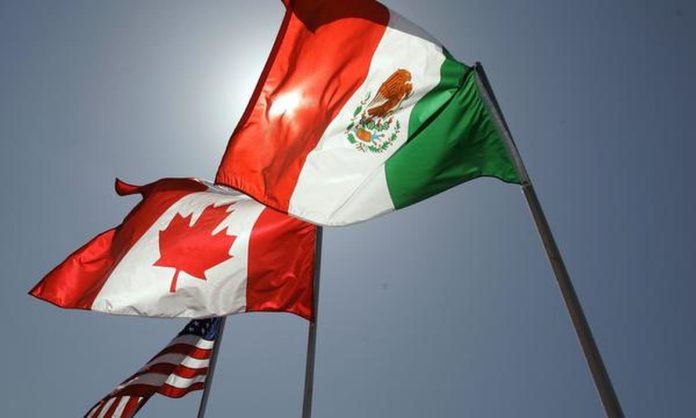In a bold trade policy move, Donald Trump has confirmed that 25% tariffs on imports from Canada and Mexico will go into effect on March 4, 2025. Despite ongoing diplomatic discussions and efforts from both neighboring countries to address U.S. concerns over border security and fentanyl trafficking, Trump’s administration remains firm on enforcing the tariffs.
The decision has sparked significant economic and political debate, as both Canada and Mexico are among the United States’ largest trading partners. Business leaders, economists, and government officials on both sides of the border warn that these tariffs could disrupt supply chains, increase consumer prices, and strain international relations.
Background: Why Is Trump Imposing These Tariffs?
The U.S.-Mexico-Canada Agreement (USMCA) was designed to create a free and fair trade environment between the three countries. However, Trump argues that Canada and Mexico have not done enough to curb illegal immigration and drug smuggling, particularly fentanyl, into the U.S.
Earlier this year, the U.S. government temporarily delayed the implementation of tariffs to give both nations a chance to strengthen border security and tackle drug trafficking concerns. However, Trump has now stated that the tariffs will proceed as scheduled, citing a lack of sufficient progress.
Trump’s Official Statement
During a press briefing at the White House, Trump reaffirmed his stance, stating:
“The tariffs are going forward on time, on schedule. The United States has been mistreated by many countries, not just Canada and Mexico, but now we are taking back control of our trade policies.”
This announcement was made during a joint press conference with French President Emmanuel Macron, where Trump emphasized that these tariffs are part of a larger strategy to protect American jobs, industries, and national security.
Canada and Mexico’s Response
Canada’s Reaction
Canadian Prime Minister Justin Trudeau has actively engaged with U.S. officials to prevent the tariffs, emphasizing that Canada has taken substantial steps to enhance border security and control fentanyl smuggling. Trudeau has expressed concern that these tariffs could harm both Canadian and American economies, given the deeply integrated trade networks between the two nations.
Mexico’s Stance
Similarly, Mexican President Claudia Sheinbaum has stated that her government has been working diligently to address U.S. concerns. She recently said:
“We are actively negotiating with the United States and believe we can reach an agreement before the March 4 deadline.”
Despite these diplomatic efforts, the U.S. administration remains firm in its decision.
Economic Consequences of the Tariffs
1. Impact on U.S. Businesses
The U.S. business community has expressed major concerns about the tariffs, warning that they could:
- Increase manufacturing costs for American industries that rely on Canadian and Mexican imports, particularly in the automotive and energy sectors.
- Raise prices for American consumers, as businesses pass higher costs onto buyers.
- Disrupt supply chains, leading to potential shortages of critical materials.
2. Effect on Trade and Supply Chains
- Canada and Mexico account for nearly $900 billion in annual trade with the United States.
- The automotive industry could see significant price hikes, as many car parts are manufactured in Mexico and then assembled in the U.S.
- The energy sector is also at risk, with U.S. refiners already considering switching to alternative crude oil sources to avoid the extra costs of Mexican and Canadian imports.
3. Consumer Price Hikes
Analysts predict that Americans will pay more for products like:
- Cars and auto parts
- Electronics and appliances
- Groceries and raw materials
These price increases will likely impact the average American household, making everyday goods more expensive.
Trump’s Larger Trade Strategy
Beyond Canada and Mexico, Trump has also signaled plans to impose new tariffs on China.
- A 10% tariff on Chinese imports is under discussion, aiming to reduce trade imbalances and curb fentanyl smuggling.
- The Trump administration believes that tougher trade policies are necessary to protect American interests.
Political Implications
For the 2024 U.S. Presidential Election
- The tariff decision is expected to play a major role in the upcoming 2024 U.S. Presidential election.
- Trump’s “America First” trade policies have been widely supported by his base, but some Republican lawmakers are concerned about economic fallout.
- Democratic leaders have strongly opposed the move, arguing that it will hurt American businesses and consumers.
For U.S.-Canada-Mexico Relations
- The tariffs could strain diplomatic ties, leading to retaliatory trade measures from Canada and Mexico.
- Both countries have hinted at potential countermeasures, including imposing tariffs on American exports.
What Happens Next?
- The March 4 deadline is fast approaching, and no last-minute agreements have been reached yet.
- Canada and Mexico continue diplomatic talks to find a solution, but the Trump administration remains firm.
- If the tariffs go into effect, we can expect legal challenges, political backlash, and economic disruptions in the coming months.
The imminent 25% tariffs on Canada and Mexico mark a significant shift in U.S. trade policy. While Trump argues that these measures are necessary to protect national security and American workers, critics warn of economic risks and diplomatic fallout.
As the deadline approaches, the world watches closely to see whether Canada and Mexico will find a way to avoid these steep trade penalties—or if a full-scale trade war is on the horizon.
Follow Swadesi for more such updates!




